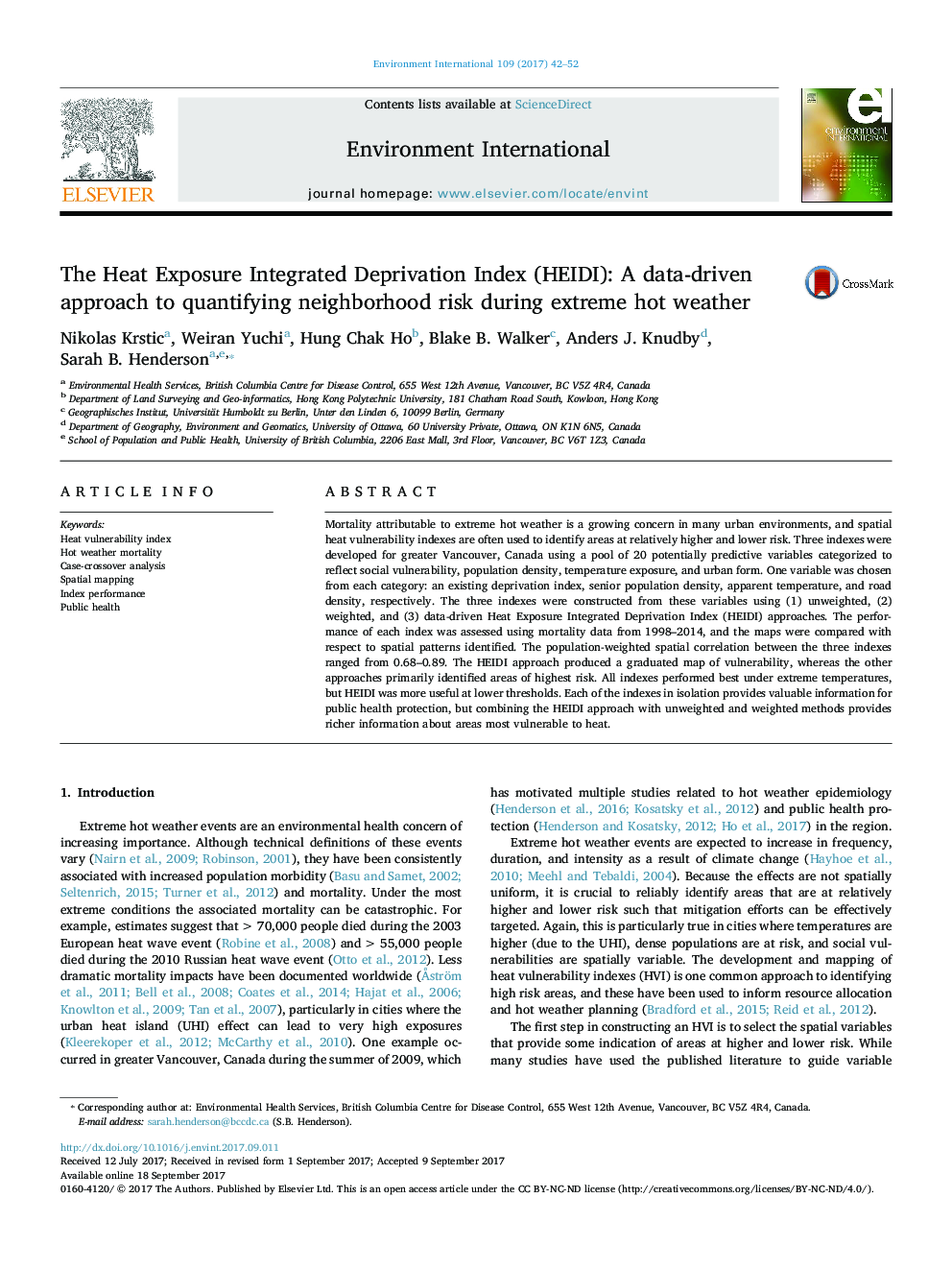| کد مقاله | کد نشریه | سال انتشار | مقاله انگلیسی | نسخه تمام متن |
|---|---|---|---|---|
| 5748179 | 1619021 | 2017 | 11 صفحه PDF | دانلود رایگان |

- Mortality data were used to select four spatial variables for index construction.
- Three indexes were constructed using conventional and data-driven HEIDI approaches.
- Mortality data were used to evaluate index performance on extremely hot days.
- Areas of increased risk were consistently identified by all three indexes.
- HEIDI identified larger areas at risk and performed better at lower temperatures.
Mortality attributable to extreme hot weather is a growing concern in many urban environments, and spatial heat vulnerability indexes are often used to identify areas at relatively higher and lower risk. Three indexes were developed for greater Vancouver, Canada using a pool of 20 potentially predictive variables categorized to reflect social vulnerability, population density, temperature exposure, and urban form. One variable was chosen from each category: an existing deprivation index, senior population density, apparent temperature, and road density, respectively. The three indexes were constructed from these variables using (1) unweighted, (2) weighted, and (3) data-driven Heat Exposure Integrated Deprivation Index (HEIDI) approaches. The performance of each index was assessed using mortality data from 1998-2014, and the maps were compared with respect to spatial patterns identified. The population-weighted spatial correlation between the three indexes ranged from 0.68-0.89. The HEIDI approach produced a graduated map of vulnerability, whereas the other approaches primarily identified areas of highest risk. All indexes performed best under extreme temperatures, but HEIDI was more useful at lower thresholds. Each of the indexes in isolation provides valuable information for public health protection, but combining the HEIDI approach with unweighted and weighted methods provides richer information about areas most vulnerable to heat.
Journal: Environment International - Volume 109, December 2017, Pages 42-52